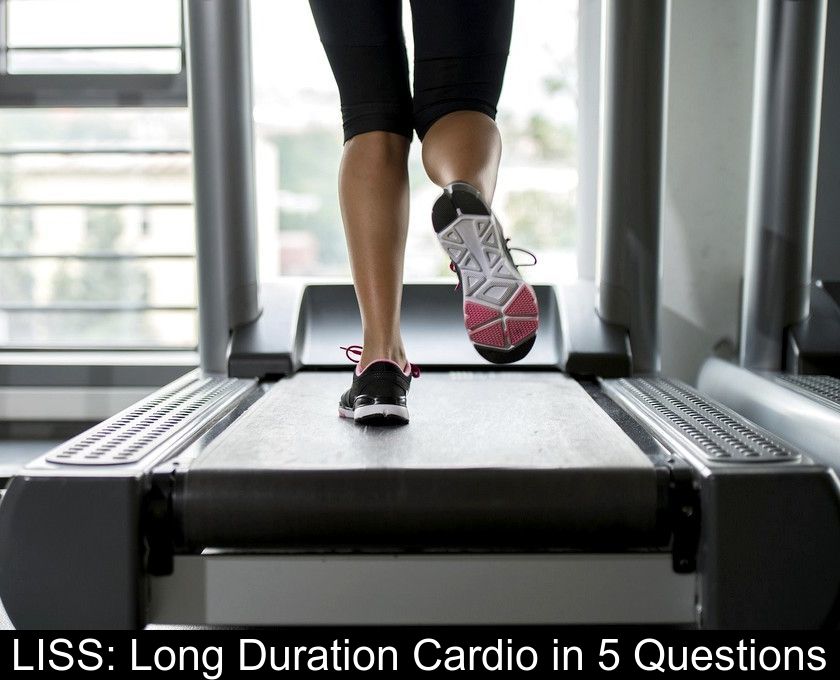Liss: Long Duration Cardio In 5 Questions
The world of fitness is not immune to trends. After the popularity of short and intense workouts, long-duration cardio or LISS is making a big comeback in gyms. We invite you to explore the pros and cons of this method in 5 questions.
What is long-duration cardio?
Long-duration cardio is a form of cardiovascular training that can be practiced in various ways. You might already be doing it without realizing, by running, cycling, or going to the gym...
This traditional cardio training method is also known as LISS for Low Intensity Steady State. The principle of this training is to provide a continuous and steady effort for a duration ranging from 30 to 90 minutes.
2- What is the difference between LISS and HIIT?
In recent years, long-duration cardio had fallen by the wayside in favor of another training method called interval training or HIIT for High Intensity Interval Training.
Unlike LISS, which involves a continuous low-intensity effort for an average duration of 45 minutes, HIIT involves alternating high-intensity exercises with rest phases.
The difference between the two methods lies in the duration of the training and the intensity of the effort provided. In the first case, the goal is not to reach the maximum heart rate but to stay around 60 to 65%. In the second case, the effort's intensity is more significant, and the goal is to reach a peak of maximum heart rate.
3- HIIT vs LISS: Which Method Is More Effective?
You've understood it, the acronyms HIIT and LISS stand for two entirely different training methods. However, nothing prevents combining the two if one wants to improve endurance and sculpt their physique at the same time.
Long-duration cardio is gentler than interval training, but it is no less effective for weight loss and maintaining a healthy heart. Sustained effort allows for calorie burning and fat mobilization. It also improves aerobic capacity, which is the ability of the cardiovascular system to work efficiently during exertion.
In the world of fitness and sports training in general, some people prefer one method over the other, depending on their schedule, physical condition, and health status.
The choice of one type of training over another is very personal. But, in reality, both cardio methods are effective. Now that the hype for HIIT has somewhat subsided, LISS is making a strong comeback, and not without reason.
4- What are the benefits of long-duration cardio?
Even though long-duration cardio is less intense than interval training, it offers real benefits for cardiovascular health. It allows the heart to be trained gradually and to gain endurance after a month of regular practice. LISS is effective for gently working on cardio, being less out of breath, and lowering heart rate. It is also used in cardiac rehabilitation for patients who have had a heart attack or suffer from heart or lung failure.
Conversely, the HIIT method cannot be used for these patients. It puts too much strain on the heart and could trigger incidents in people with silent heart disease.
The great advantage of LISS is that it is accessible to the widest audience, regardless of age and physical condition. This cardio training is suitable for seniors and sedentary individuals, including those with joint pain. This low-intensity technique limits the risk of injury when resuming physical activity or starting a new sport.
How to practice long-duration cardio?
There are many ways to engage in long-duration cardio, such as:
- Power walking
- Running
- Swimming
- Cycling
- Incline treadmill walking
- Rowing
- Stationary bike riding
- Elliptical training
- Indoor fitness classes.
Regardless of the chosen physical activity, it should be done for about an hour. The main downside of the LISS method is that it's time-consuming. On this front, HIIT may be more suitable for those who lack time for exercise and want to burn more calories during shorter workout sessions.
To properly gauge your effort's intensity, remember that you should be able to speak without feeling breathless or strained. If you're a beginner, you need to proceed at your own pace. Adjust the incline on your treadmill or the resistance on your stationary bike so that the exercise intensity remains moderate.
Ideally, you should do long-duration cardio sessions three times a week and gradually increase the session's length from 30 to 60 minutes or more. If you're using fitness machines at a gym, you can also progressively increase the difficulty setting on these devices.











